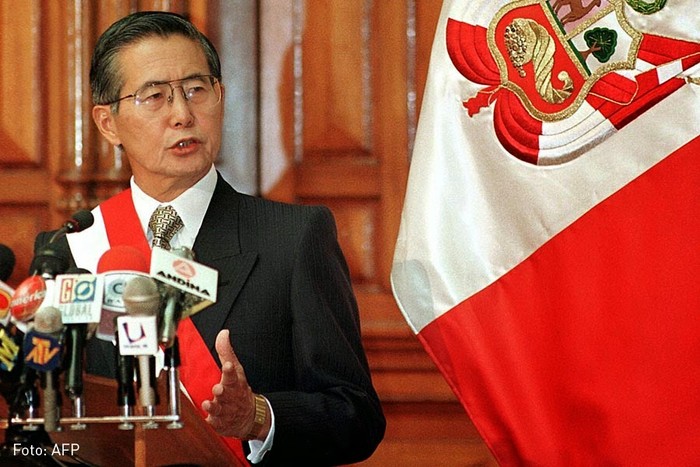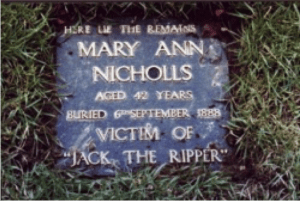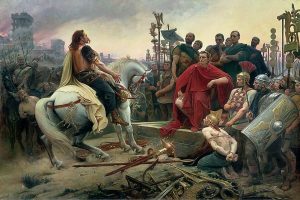“God please help us.” This is what the Economy Minister said to the world during Alberto Fujimori’s Peruvian government in 1990.1 No one could believe what was happening in Peru—the country was simultaneously being attacked by two terrorist groups: the Shining Path and Revolutionary Movement Tupac Amaru.2 However, bombs, massacres, and kidnappings weren’t the only problems: the Peruvian GDP was declining as never before. That was 1990. What had happened to bring Peru to such economic peril?
The year was 1980, and Fernando Belaunde Terry was Peru’s president. Peru was then known for its mining, which, through exports, was a major contributor to the GDP. At that time, the two largest national exports, silver and copper, dropped in value from $3000 per ton down to $1300 per ton.3 The last time prices were that low was 1940. This caused great damage to the government’s revenue, and foreign debt began to increase. This is due to the fact that the Peruvian government was borrowing money. Yet many were expecting that these metals would go back to their previous price levels.
Three years later, a natural disaster called El Fenómeno del Niño struck. The phenomenon occurs due to an increase in temperature of the Pacific Ocean, creating intense rainfalls or immense rainforest fires. In this case, massive precipitation fell throughout the Peruvian jungle. This led to floods that travelled all the way to the ocean. All the crops growing near the rivers and in the jungle were destroyed. Furthermore, the temperature of the Pacific Ocean had increased and therefore, the marine life started to migrate to other territories. This devastated the fishing economy which, alongside mining and agriculture, were major contributors to Peru’s GDP. Foreign debts could not be paid, and each day Peru’s GDP continued to decreas, due also to the lack of consumer spending.4

At the same time, 1985 saw the rise of Alan Garcia as the newly elected president of Peru: the youngest president to be elected in all Peruvian history. At that moment, the government’s main concern was halting its nationwide inflation.
Peru had become a chaotic place to live, and the people knew it—numerous citizens started to leave the country. People emigrated to Argentina, Chile, Bolivia, Venezuela, and the United States. The inflation rate in 1987 rose to 114.5% and the Peruvian currency depreciated dramatically against the dollar.5 The GDP was hitting rock-bottom and the government needed to do something about it. This led to the use of government subsidies, attempting to stimulate a demand for products—the government expected that people would consume more and the GDP would initiate its upward trajectory. Also, Alan Garcia decided to launch big projects, attempting to create jobs that would decrease the unemployment rates, reduce inflation, and kick-start the growth of the economy. The money used for these projects came from more government loans. To make matters worse, the Peruvian government didn’t have the funds to pay back the loans. As a result, Garcia got into an altercation with the International Monetary Fund (IMF), announcing that he wasn’t going to pay the national debts. The reason? The state declared bankruptcy. Naturally, the loans came to a swift end.6
Peru was not gaining money because businesses were stagnant, and Garcia had to do something about it. So, the method that President Garcia employed was the nationalization of the banks, which occurred in July 1987. This technique consisted of the government taking possession of the majority stake of private banks and making them highly controlled. Consequently, the government had full control of the money in the country.
By 1988, Peru was in debt to virtually all countries in Latin America. Even by the past year’s standards, the inflation rate was becoming absurd: 1722%. The lack of products imported into the country only contributed to the economic recession, which promptly gave rise to a black market. Then, in 1989, the inflation rate kept skyrocketing, reaching 2775%, and the government was not taking action. Due to the extreme circumstances, the Central Reserve Bank of Peru was given an order by the President to print more money. This led to increase currency devaluation—by having more money and less bank reserves. For that reason, the value of the Peruvian Inti decreased even more.7

Due to Garcia’s poor management during his tenure and all the corruption that surfaced, he left the presidency when his mandate concluded on July 28, 1990. At that moment, the inflation rate reached its highest point in Peruvian history, 7481%. The crisis was at its peak—many lacked a house, food, and even water. The unemployment rate rose to 8.3%.8 The minimum wage reached its lowest point of 0.00008184 US dollars (1 PEN/Month) in February of 1990. In all its history, this was Peru’s darkest hour.
However, it was then, on July 28 1990, that Alberto Fujimori took the mantle of Peru’s president. Fujimori presented himself as a man of the people. His first goal? End the economic crisis. Fujimori started a campaign, labelled “Fujishock,” that had as its main goals reducing the inflation rates, paying external debts (so the Peruvian government could once again trade internationally), and increasing national production.9 It was led by both President Fujimori and the Economy Minister Juan Carlos Hurtado Miller.
When “Fujishock” started, some drastic measures had to be taken. This is because Fujimori had a large problem—the majority of the congressmen were against him and all of the laws he tried to enact were not approved. On August 8, 1990, Fujimori and Hurtado Miller were forced to dissolve Congress, allowing them to act with expediency in resolving the country’s problems. The first action they took was to revalue the currency and rename it from the “Peruvian Inti” to the “Peruvian Nuevo Sol.” As a result, the “Peruvian Nuevo Sol” had a value that the government guaranteed, halting depreciation. Secondly, the subsidies implemented in Garcia’s government were removed so that all the national products could return to their original value. For instance, a gallon of gasoline was valued at 1.72 US dollars (21,000 Peruvian Soles). After the subsidy was removed, it reached a price of 55.24 US dollars (675,000 Peruvian Soles).10 Therefore, people started to use cheaper substitute products, allowing them to subsist in their daily lives. Thirdly, Peru started to export raw materials, liberating and reopening the Peruvian economy. This course of action was possible because Fujimori made peace with the International Monetary Fund and other Latin American countries, clarifying that previous debt would be paid in full. By the end of that same year, inflation rates dropped significantly, all the way to 650%; nevertheless, this was still too high and additional measures needed to be taken.

During the first months of 1991, some public companies were put up for sale to private investors. By reaching economic stability, investors started to invest in growing companies that would increase sales. Since the government needed the money and they could not afford to maintain these large companies, this method generated higher paying jobs for the Peruvian workforce. Furthermore, the intention was to increase production in the country so consumers could start to spend more, and in the long run generate higher revenue in exports. Similarly, international corporations took advantage of Peru’s low minimum wage and the high quality of raw materials by purchasing or building companies. Not only were new job opportunities generated, but a higher production was achieved. By July 1991, the inflation rate decreased to 139%. Peru’s GDP was increasing and stability started to appear in the country.11
The GDP continued increasing from its lowest point of 15.24 billion USD in 1986, to 35.97 billion USD in 1992. The economic crisis came to an end, but it had certainly harmed the country drastically. Thousand of people died because of the starvation this crisis generated. However, from 1986 to present, the GDP rate has been increasing. Today’s GDP is at 222 billion USD.12
To be sure, this situation forced the government and the citizens of Peru to reflect on decisions previously made, and gain more knowledge for future economic events. In conclusion, the economic crisis damaged Peru, but in the long run, it made Peruvians respond in a positive way and restart the country’s growth.
- Cesar Arias, Fujishock 1 (2016; Cesar Arias, 2016), YouTube. https://www.youtube.com/watch?v=vIj8THBA3s8 ↵
- Vijay Prashad, “Terror as Usual in Peru,” Economic and Political Weekly 32, no. 20/21 (1997): 1068-1069. ↵
- Efrain Gonzales de Olarte, “Economic Stabilization and Structural Adjustment under Fujimori,” Journal of Interamerican Studies and World Affairs 35, no. 2 (1993): 70. ↵
- Efrain Gonzales de Olarte, “Economic Stabilization and Structural Adjustment under Fujimori,” Journal of Interamerican Studies and World Affairs 35, no. 2 (1993): 52. ↵
- Efrain Gonzales de Olarte, “Economic Stabilization and Structural Adjustment under Fujimori,” Journal of Interamerican Studies and World Affairs 35, no. 2 (1993): 70. ↵
- Efrain Gonzales de Olarte, “Economic Stabilization and Structural Adjustment under Fujimori,” Journal of Interamerican Studies and World Affairs 35, no. 2 (1993): 6. ↵
- Efrain Gonzales de Olarte, “Economic Stabilization and Structural Adjustment under Fujimori,” Journal of Interamerican Studies and World Affairs 35, no. 2 (1993): 64. ↵
- Efrain Gonzales de Olarte, “Economic Stabilization and Structural Adjustment under Fujimori,” Journal of Interamerican Studies and World Affairs 35, no. 2 (1993): 51-80. ↵
- Salem Press Biographical Encyclopedia, 2018, s.v. “Alberto Fujimori.” ↵
- Christina Paxson, “Child health and the 1988-92 economic crisis in Peru,” 2004, https://openknowledge.worldbank.org/bitstream/handle/10986/14778/wps3260child.pdf?sequence=1&isAllowed=y ↵
- Efrain Gonzales de Olarte, “Economic Stabilization and Structural Adjustment under Fujimori,” Journal of Interamerican Studies and World Affairs 35, no. 2 (1993): 70. ↵
- Christina Paxson, “Child health and the 1988-92 economic crisis in Peru,” 2004, The World Bank, https://openknowledge.worldbank.org/bitstream/handle/10986/14778/wps3260child.pdf?sequence=1&isAllowed=y ↵



15 comments
LEE
I like this article because i was always interested in this kind of article. I love hearing stories about Peru the country. I wanted to visit there if there is a chance. Thank you for sharing a nice story with us. I am happy to discuss this with my friend. I really enjoyed this article. Have a good day man!
Kelly Arevalo
Hello, Nicolas. Amazing article! This is one of the most embarrassing episodes in Peruvian history, to say the least. The way president Alan Garcia handled this economic crisis was terrible. The sole idea that a president of any nation would believe the solution to this problem would simply be to print more money is shameful. I know thanks to what my parent told me about those years and my classes, how much the president’s actions harmed the Peruvian population, and is awful, how despite all of that he managed to get reelected years later. The resolution of this economic crisis and the triumph against terrorism is something that is often forgotten about president Fujimori’s period, and it is something indeed very admirable.
Haley Ticas
It’s sad to see how often the government lets down its own country and people, especially when it come to the financial aspects of things. Many of the domestic disasters that occur in countries are the ways people become aware of the issues which is very sad because they can all easily be avoided. Sad to see that Peru had to go through this, I had no idea. Great article Nicholas!
Soleil Armijo
This article was very informative! I learned a great deal about the Peruvian financial crisis of 1990. I Had no idea that things got that dark in Peru and I always find it interesting how countries get out of financial crisis and it has much to do with leaders who make tough decisions. I had never heard of President Fujimori but the comment above highlights him in a negative light, but in this instance I believe he did a good thing for Peru.
Marian Reyes
Previously, I had only heard of Peruvian President Fujimori in a negative fashion. He was often used as an example of the “perils of presidentialism,” but this article does a great job at giving a fuller picture. Fujimori essentially saved Peru from a crisis that could of lasted decades, allowing Peru to get back up on its feet and face the future. This goes to show that situations are often grayer than what most people believe/want them to be. Connecting with Nations in Transition, we can see how circumstances in a country evolves their polices and plans of action.
Grace Frey
Nicholas, this was a great article! I try to stay informed about the state of Latin American country’s today, but I was unaware of this period of Peru’s history. It is really interesting to me how Peru fixed their economic struggle by taking steps themselves to help promote economic growth and that Foreign Direct Investment was not mentioned. For countries that are struggling or are in need of economic assistance, FDI is often employed to help the country pay off their debts and work on their economy; however, in this case, it seemed that the new government took it into their hands and implemented key reforms in order to save their economy. I am surprised I haven’t heard more about this period in Peruvian history for that reason!
Rhys Kennedy
The amount of detail, especially regarding the amount of economic detail in this article, is very well done. It happens too often that an awful series of events is the reason as to why change happens. Not only did the people of Peru have to go through an economic downturn, but also had to deal with a natural disaster while being economically vulnerable. However, hopefully, now lessons have been learned and change has occurred in the Peruvian economy to ensure that this does not happen again.
Carlos Cortes
Hello Nicholas, this is a great article that explain how inflation and bad government management can cause great harm to a country. And this is a very modern example that happened less than 50 years ago, to show us that this can happen to anyone and is a threat today. However, this does give us an example of what not too follow and ways to prevent this from happening again very much like the Peruvians who learned the hard way.
Emilia Caballero Carmona
Hey Nicolas! This is such an interesting article; it was so informative and clear. I was in shock when I read about Peru’s economic crisis in 1990. I will admit I had never heard about this happening in Peru in the past, but I liked learning about it by reading your article because you did a good job explaining everything in detail without being confusing. Like you mention at the end, I hope Peru’s people and government learn from the mistakes of the past so this does not happen ever again.
Camila Garcia
The article is very well written, the hook is captivating. I feel as if the direct quote highlighted how horrible the situation is. I had no prior knowledge about Peru’s economic downtown, however after reading this article I feel more educated about the topic. The most interesting part is when you discussed how much inflation had deceased under Fujimori. I can sense a connection between inflation in Peru and in Venezuela, it is sad to see how much it can destroy an economy.